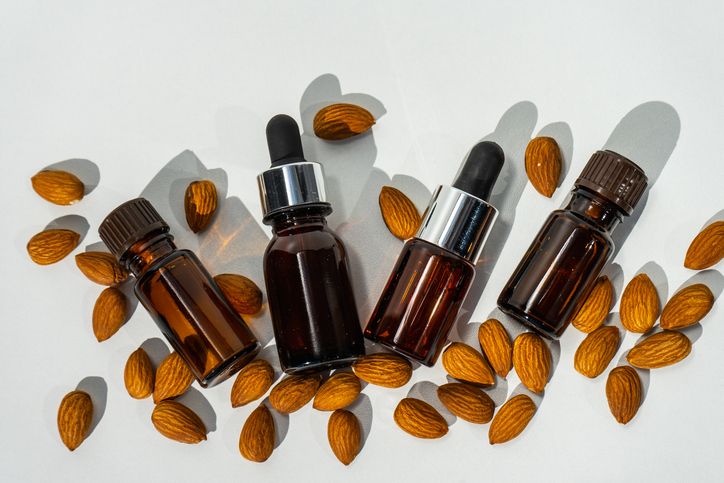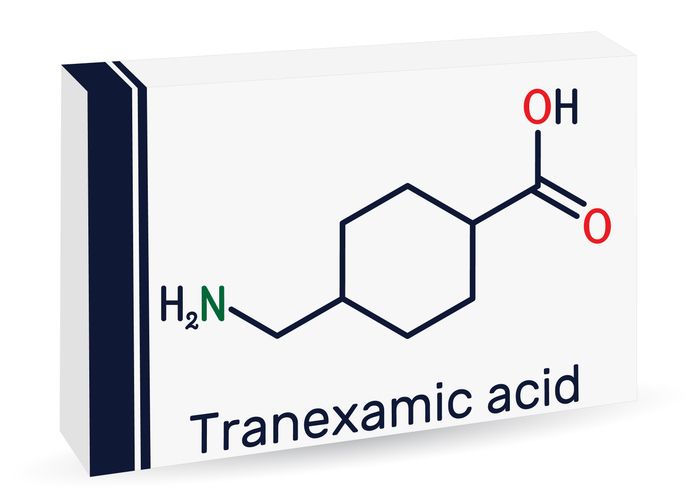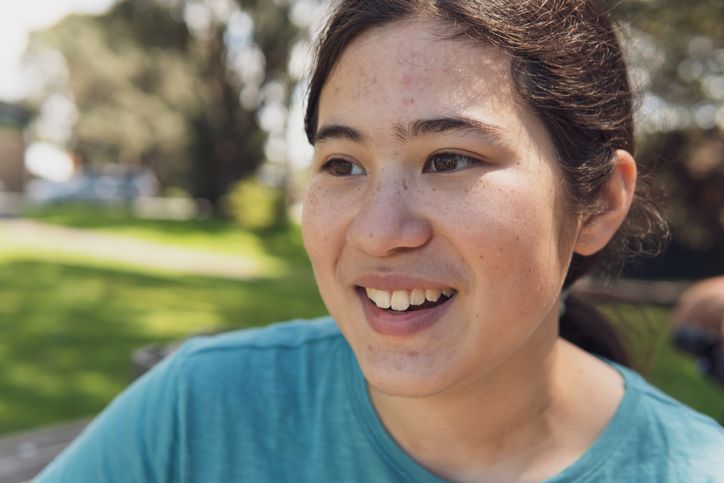- Home
- Trend
- Weight Loss Strategies
- Acne Tips
- Hair Health Information
- Blemish Removal Tips
- Acne Scar Removal Tips
- Muscle Building Techniques
- Intimate Care Tips
- Postpartum Intimate Care
- Eye Bags Wiki
- Tips for Face Slimming
- Secret of Permanent Hair Removal
- Breast Enlargement Tips
- Cure to Snoring
- Marionette Lines
- Skin-Tightening Secrets
Loose or saggy skin on the stomach is a common concern, especially after rapid weight loss, pregnancy, or aging. While the skin naturally stretches to accommodate changes in body shape, it does not always snap back to its original firmness. As a result, many people search for ways to tighten skin on the belly and regain a smoother, more toned appearance.
10 Reasons on Why Does Belly Skin Become Loose

Before discussing how to tighten skin on the stomach, it's essential to understand the factors that contribute to sagging belly skin. Several biological, environmental, and lifestyle-related causes can lead to loose skin on the tummy, affecting people of different ages and body types.
1. Aging and Loss of Collagen
As we age, our skin structure weakens due to a natural decline in collagen and elastin production. These proteins are responsible for skin elasticity, firmness, and resilience.
• Collagen provides strength and structure, keeping the skin firm.
• Elastin allows the skin to stretch and snap back to its original shape.
By the time a person reaches their 30s or 40s, collagen production slows significantly, leading to looser skin, wrinkles, and reduced elasticity. Over time, this process thins the skin, making it more prone to sagging, especially around the abdomen.
Additionally, factors like UV exposure, smoking, and poor skincare habits can accelerate collagen degradation, leading to premature aging and increased skin laxity.
2. Weight Loss and Excess Skin
Rapid weight loss is a common cause of loose belly skin. When a person gains weight, the skin expands and stretches to accommodate increased fat storage. However, after significant or rapid weight loss, the skin may not contract back, leading to excess, sagging skin.
Factors that influence how much loose skin remains after weight loss include:
• The amount of weight lost – Losing large amounts of weight (50+ pounds) increases the likelihood of excess skin.
• Speed of weight loss – Rapid weight loss (e.g., crash diets, weight loss surgery) doesn’t allow the skin enough time to gradually adjust.
• Skin elasticity – Younger individuals or those with higher collagen levels are more likely to experience better skin retraction after weight loss.
3. Pregnancy and Stretched Skin
During pregnancy, the skin on the stomach stretches significantly to accommodate the growing baby. This rapid expansion often leads to weakened elastin fibers, making it harder for the skin to bounce back postpartum.
Post-pregnancy skin changes include:
• Sagging skin – Due to the skin's inability to retract fully.
• Stretch marks – Caused by rapid stretching, damaging the dermis layer of the skin.
• Weakened abdominal muscles – The rectus abdominis muscles may separate (diastasis recti), making the stomach appear looser even after childbirth.
Women who experience multiple pregnancies, gain excessive weight during pregnancy, or have lower natural collagen levels are more likely to have persistent loose belly skin.
4. Lack of Exercise and Muscle Mass Loss
Muscles act as a support system for the skin, and their loss can lead to a saggy appearance in the abdominal area. Without sufficient muscle tone, the skin may appear looser, even if weight loss isn't a factor.
• Aging-related muscle loss (sarcopenia) contributes to weakened support for the skin, accelerating sagging.
• Sedentary lifestyles reduce muscle mass, making the skin appear less firm.
• Skipping strength training during weight loss can result in soft, sagging skin, as fat is lost without muscle replacing it.
5. Genetics and Skin Type
Some individuals are genetically predisposed to have less elastic skin, making them more prone to loose skin after weight loss, pregnancy, or aging.
Genetic factors that influence skin laxity include:
• Collagen production levels – Some people naturally produce less collagen.
• Skin thickness – Thicker skin types tend to retain their shape better than thinner skin.
• Ethnicity – Studies suggest that certain ethnic groups have stronger collagen structures, affecting how the skin responds to stretching and weight fluctuations.
If family members have struggled with sagging skin, it may indicate a higher likelihood of developing the same issue over time.
6. Hormonal Changes
Hormones play a crucial role in skin health and elasticity. Fluctuations in estrogen, testosterone, and cortisol levels can impact collagen production and fat distribution, contributing to loose belly skin.
Common hormonal influences on skin laxity:
• Menopause – Decreased estrogen leads to collagen loss, making skin thinner and less elastic.
• Thyroid disorders – Conditions like hypothyroidism can slow skin cell turnover, contributing to dryness and laxity.
• Cortisol (stress hormone) – Chronic stress increases cortisol levels, which can break down collagen and accelerate skin aging.
7. Poor Nutrition and Dehydration
A diet lacking in essential nutrients can significantly affect skin elasticity. Nutrients like protein, vitamins, and antioxidants are vital for collagen synthesis and overall skin health.
Nutrient deficiencies that impact skin firmness:
• Low protein intake – Collagen is made of amino acids, so inadequate protein slows collagen regeneration.
• Vitamin C deficiency – Essential for collagen and elastin production.
• Dehydration – Causes the skin to appear dry, wrinkled, and less elastic.
8. Chronic Sun Exposure and UV Damage
Excessive UV exposure from the sun or tanning beds damages collagen fibers, leading to premature skin aging and loss of elasticity.
How UV rays contribute to sagging skin:
• Break down collagen and elastin – Making skin looser and more fragile.
• Increase free radicals – Leading to skin cell damage and decreased skin repair ability.
• Cause photoaging – Sun damage can thin the skin, making sagging more prominent.
9. Smoking and Alcohol Consumption
Both smoking and excessive alcohol intake contribute to premature skin aging and loose belly skin.
• Smoking reduces oxygen and nutrient delivery to the skin, accelerating collagen breakdown.
• Alcohol dehydrates the skin, making it appear dull and saggy over time.
• Both habits generate free radicals, which weaken skin structure and elasticity.
10. Chronic Inflammation and Poor Gut Health
Inflammation caused by poor gut health, autoimmune diseases, or an unhealthy lifestyle can interfere with collagen production and lead to weakened skin structure.
• High sugar intake contributes to glycation, a process that damages collagen.
• Processed foods and gut imbalances increase inflammation, leading to premature skin aging.
• Autoimmune conditions like lupus or eczema can affect skin regeneration.
4 Best Skincare Ingredients to Tighten Skin on Stomach

While skincare alone cannot completely reverse sagging skin, certain active ingredients can help improve elasticity, enhance firmness, and support collagen production when applied consistently. These ingredients work by hydrating the skin, stimulating collagen synthesis, and strengthening the skin’s structure, making loose skin on the tummy appear firmer over time.
1. Retinoids (Retinol, Retin-A)
Retinoids are vitamin A derivatives that have been widely studied for their ability to boost skin renewal and stimulate collagen and elastin production.
Increase collagen and elastin levels – Retinoids help rebuild the skin’s structural proteins, making it appear firmer and more elastic.
Improve skin’s surface texture – They promote cell turnover, helping to refine rough, crepey skin that often accompanies loose belly skin.
Reduce fine lines and wrinkles – By stimulating new collagen, retinoids help improve skin tone and texture over time.
Note: Retinoids can cause temporary redness, dryness, and peeling. It's best to start with a low concentration and use them at night with sunscreen during the day, as they can make the skin more sensitive to sunlight.
2. Vitamin C
Vitamin C is a powerful antioxidant that plays a crucial role in collagen synthesis and skin repair, making it an essential ingredient for tightening skin on the stomach.
Boosts collagen production – Helps restore skin elasticity, making sagging skin appear firmer.
Protects against free radical damage – Neutralizes oxidative stress caused by UV exposure, pollution, and aging, which can break down collagen.
Brightens and evens out skin tone – Reduces hyperpigmentation, dullness, and uneven texture, making the stomach skin appear healthier.
For best results, use a stable form of vitamin C (such as ascorbic acid or tetrahexyldecyl ascorbate) and pair it with sunscreen to protect against UV-related collagen breakdown.
3. Peptides
Peptides are short chains of amino acids that act as building blocks for collagen, elastin, and keratin. These proteins are essential for firm, youthful-looking skin and can help reduce loose skin on the tummy over time.
Strengthen skin structure – Peptides signal the body to produce more collagen, helping restore skin firmness.
Improve elasticity – They support skin resilience, making it less prone to sagging.
Enhance moisture retention – Some peptides help reinforce the skin barrier, keeping the skin hydrated and plump.
Since peptides work best in combination with other collagen-boosting ingredients, they are often found in serums and creams that include hyaluronic acid, antioxidants, and retinoids.
4. Hyaluronic Acid
Hyaluronic acid (HA) is a humectant that attracts and retains moisture in the skin, making it appear plumper and more hydrated. While HA does not directly stimulate collagen production, it provides an ideal environment for collagen regeneration, supporting overall skin health.
Deeply hydrates the skin – Retains up to 1,000 times its weight in water, improving skin suppleness.
Makes the skin appear firmer – Hydrated skin looks smoother and less crepey, reducing the appearance of loose skin on the stomach.
Supports wound healing and skin repair – Helps maintain a healthy skin barrier, essential for preventing premature sagging.
For best results, look for low and high molecular weight hyaluronic acid in serums or creams, as different molecular sizes penetrate different layers of the skin for multi-level hydration.
These skincare ingredients can help improve skin elasticity and firmness, but they primarily address loose skin on the surface. If you are concerned about excess fat under sagging skin or need more dramatic skin tightening, professional treatments can provide targeted fat reduction and skin-tightening benefits.
免費體驗
S6 Body Sculpting Treatment
1 Minute Self-Registration
Date should not be before minimal date
How to Tighten Saggy Belly Skin: 3 Types of Advanced Treatments
While natural remedies and topical treatments can help improve skin elasticity, they may not be enough for severe sagging skin. In such cases, non-surgical skin tightening treatments offer an effective alternative to more invasive procedures like tummy tuck surgery. These treatments work by stimulating collagen production, tightening loose belly skin, and improving overall skin tone without the need for cosmetic surgery.
1. Radiofrequency (RF) Skin Tightening
RF skin tightening is a non-surgical procedure that uses radiofrequency energy to send heat deep into the skin, triggering collagen and elastin production. This process firms sagging skin and enhances skin elasticity over time.
The controlled RF energy heats the dermal layers, stimulating fibroblast activity, which encourages the production of new collagen fibers. Over time, the newly formed collagen and elastin fibers help tighten loose skin, making it appear firmer and more youthful.
Unlike a tummy tuck surgery, RF skin tightening is painless and allows patients to resume daily activities immediately after treatment. RF skin tightening is suitable for individuals experiencing mild to moderate skin laxity due to aging skin, rapid weight gain, or weight loss programs.
2. Ultrasound Therapy
Ultrasound skin tightening is another non-surgical skin tightening treatment that uses focused ultrasound energy to penetrate deep layers of the skin and induce collagen production.
Compared to RF treatments, ultrasound therapy reaches the SMAS (Superficial Musculo-Aponeurotic System), which is the same layer targeted in surgical procedures like a tummy tuck. It promotes collagen and elastin production – The heat energy stimulates the body’s natural healing response, triggering the formation of new collagen fibers for firmer, tighter skin.
Although initial improvements can be seen within a few weeks, full results typically develop over 2–3 months as the body continues to rebuild collagen. Ultrasound therapy is ideal for individuals with moderate skin sagging and can be combined with other non-surgical treatments for enhanced results.
3. Laser Skin Tightening
Laser therapy is a popular skin tightening procedure that uses light energy to induce collagen production and improve skin tone.
Laser skin tightening is particularly effective for skin laxity caused by aging, weight fluctuations, or pregnancy. The heat from laser technology stimulates the production of new collagen fibers, helping to tighten loose belly skin over time.
In addition to skin tightening, laser treatments can help reduce stretch marks, discoloration, and uneven skin texture. Unlike RF skin tightening and ultrasound therapy, laser treatments primarily target the skin’s surface, making them a great choice for individuals seeking mild skin rejuvenation without undergoing cosmetic surgery.
S6 Body Sculpting Treatment – A Revolutionary Non-Invasive Solution
For those seeking a non-surgical option to firm sagging skin and remove loose skin, Perfect Medical’s S6 Body Sculpting Treatment offers an advanced and effective solution. This non-invasive procedure targets both skin laxity and excess fat, making it a great alternative to surgical procedures like a tummy tuck or body contouring surgery.
How It Works
The S6 Body Sculpting Treatment combines high-functioning bio-lasers with vacuum suction technology to tighten loose belly skin and enhance body contours.
• The biolaser energy helps break down fat cells while inducing collagen production, leading to tighter, more elastic skin.
• Vacuum suction technology enhances lymphatic drainage and removes excess fat. This process flushes out stubborn fat and improves blood circulation, supporting a healthy weight and a more toned stomach.
• Heat penetrates deeper layers of the skin to stimulate collagen production. The controlled thermal energy works deep within the dermis, helping to tighten sagging skin without damaging the skin’s surface.
If you're looking for an effective, non-invasive way to tighten loose belly skin, S6 Body Sculpting Treatment is the solution you've been searching for. This advanced treatment helps you achieve a firmer, more sculpted stomach without the need for surgery or downtime.
???? Book a consultation today and take the first step toward smoother, tighter skin—without the risks of tummy tuck surgery or other invasive procedures!免費體驗
S6 Body Sculpting Treatment
1 Minute Self-Registration
Date should not be before minimal date
FAQ

1. Can I remove excess skin after substantial weight loss without surgery?
Yes, non-surgical treatments like radiofrequency (RF) skin tightening, laser therapy, and intense pulsed light (IPL) can help tighten loose skin by stimulating collagen production. However, if the skin stretches excessively due to substantial weight loss, a full tummy tuck may be necessary for optimal results.
2. How can a healthy diet improve skin elasticity while losing weight?
A healthy diet rich in protein, vitamins C and E, and omega-3 fatty acids can boost collagen production and help maintain skin elasticity. Staying hydrated also prevents the skin from becoming dry and sagging as you lose weight.
3. What are the best non-surgical treatments to tighten sagging skin on the upper arms?
Non-surgical treatments like ultrasound therapy, RF skin tightening, and intense pulsed light (IPL) can heat deeper layers of the skin, stimulating collagen and elastin production to firm sagging skin on the upper arms.
4. How does a personalised treatment plan help in skin tightening procedures?
A personalised treatment plan ensures that medical procedures are tailored to your skin type, level of skin laxity, and overall goals. Whether you need minimally invasive treatments like laser therapy or a combination of treatments, a customized approach maximizes results.
5. Can chemical peels help tighten the skin’s surface?
Chemical peels mainly work by exfoliating the top layer of the skin, improving texture and reducing fine lines. While they don’t significantly tighten loose skin, they can enhance skin care routines by promoting cell turnover and improving overall skin tone.








